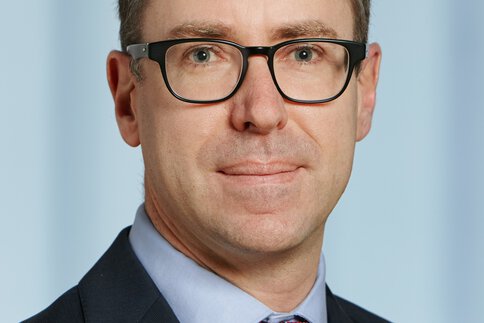“The CLEO has always been a look into the future”
Prof. Lukas Gallmann from the Institute for Quantum Electronics at ETH Zurich speaks as conference chair of CLEO®/Europe 2023 about the increasing use of industrial lasers in research laboratories, the megatrend towards the use of artificial intelligence in photonics and the highlights of this year's conference.
What are the focuses of CLEO®/Europe 2023?
As usual, our conference covers a wide range from physical fundamentals to applications. In particular, our joint sessions with the European Quantum Electronics Conference (EQEC) and with Lasers in Manufacturing (LiM) are aligned in an interdisciplinary manner and will deal with such subjects as Integrated Photonics for Astronomy, photonics for artificial intelligence (AI) and free electron lasers. The latter involves the development and use of new powerful radiation sources for X-rays. This area of research is still in its infancy and we can expect to see many new applications here in the coming years. Another focus is integrated photonics. We received a remarkably large number of papers on photonic integrated circuits (PICs), optical switches, and nano- and micro-photonics so that we were able to organize a joint symposium with six sessions. And many of the presentations will deal with AI applications. These topics have been present for a few years, but now they are really picking up steam. But CLEO®/Europe has more to offer: radiation sources, including solid state, fiber, waveguide, semiconductor lasers, ultrafast and terahertz sources, are one focus. Around 45 percent of the presentations are dedicated to this field. Another 30 percent will focus on new optical materials and processes – from ablative to additive. A third pillar is directed at applications, such as research in the attosecond range, optical sensor technology, microscopy, and communication.
Are there currently any fascinating technology trends in your segment of photonics?
As well as the trends I have already mentioned in the fields of integrated photonics and artificial intelligence, there has been an interesting development in ultrashort pulse technology: the number of very reliable industrial lasers used in research laboratories has increased; these are primarily diode-pumped solid-state lasers and fiber lasers. For a long time, the problem was that their pulse duration was too long for several applications. Because of this, Ti-sapphire lasers were used almost exclusively in the labs. But now, new approaches to nonlinear pulse compression are paving the way for industrial lasers to enter the research labs where they once originated. Here, we come the full circle. This is what makes CLEO so interesting for me. Often, these are new beam sources that then find their way into applications, where they mature and thus open up an ever broader range of applications. In other words, our conference can also be regarded as a glimpse into the future.
At your conference will there be highlights that you wish to draw the LASER community’s attention to?
Having just touched on chirped pulse amplification, the first thing that comes to mind is the plenary lecture by Nobel Laureate Donna Strickland. She will trace the arc from nonlinear optics to high-intensity laser physics. Another highlight in my opinion is the tutorial from Professor Andreas Tünnermann on the power-scaling capabilities of fiber lasers by using advanced fiber designs in combination with innovative laser and amplifier architectures. The keynote from Clara Saraceno also revolves around the constant expansion of the performance parameters. Her work at Ruhr University Bochum in Germany involves scaling powerful ultrafast lasers up to terahertz radiation. On the other end, in his keynote, Anatoly Zayats from King’s College London, U.K. talks about nonlinear optics with nanoparticles and metamaterials for low power applications. They harbor great potential for applications in integrated photonics and quantum technologies. Professor Tobias Kippenberg from EPFL in Lausanne, Switzerland, also sets a highlight in this area: he will be speaking about optical switches and on-chip frequency combs, which also function with very weak light intensities.
For more information about CLEO®/Europe 2023, click here.

